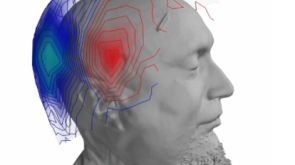
Implicit processing of ambiguity in sounds, revealed by the pupil response
The perception of our environment usually comes with a sense of how uncertain or certain we are about what we perceive. In some cases, however, a dissociation emerges between the subjective uncertainty felt by a subject, and the objective uncertainty that can be measured using the variability of the subject’s behavior. For ambiguous stimuli, we might be certain that a given stimulus has only one interpretation, even though there are many competing interpretations, even for a single participant. In a study published in November 2021 by the journal Proceedings of the National Academy of Sciences, and conducted in the framework of the AMBISENSE project financed by the Agence Nationale de la Recherche, CNRS researchers at the ENS-PSL and at the Paris School of Economics show that in response to certain ambiguous stimuli, the reaction of the pupil reveals an uncertainty response at a physiological level, even though subjects are not aware of the ambiguous nature of the stimulus.

When we listen to someone speaking in a noisy environment, or when we read a distant sign, the limits of our auditory or visual perception can lead to uncertainty about the interpretation of a word. Typically, in these situations, we can detect the presence of uncertainty at a metacognitive level. Rarer and more interesting are examples of hidden ambiguity: when our perception is associated with a strong feeling of confidence, but the reliability of our interpretations is limited. This is notably the case for two examples from social media in recent years: the sound called “Laurel/Yanny”, perceived either as “Yanny” or as “Laurel” depending on the listener, and the image called #TheDress, perceived either as black and blue or as gold and white depending on the observer.
In their study, the researchers used auditory stimuli that evoke the same kind of hidden ambiguity: two Shepard tones (tones with frequency components only at octaves) presented one after the other, which in some cases produce an ambiguous movement, up or down, in terms of frequency. It is perfectly possible, then, for a single listener to give different interpretations each time they hear the same pair of tones, but still to be very confident in their response on each trial. In this way, the listener does not realize that the same stimulus is evoking the response “up” on one trial and the response “down” on another.
Nevertheless, even if the ambiguity is not consciously accessible, it is processed by other parts of the perceptual system. Indeed, the study shows that even if they don’t feel subjective uncertainty, participants’ pupils dilate when these ambiguous stimuli are presented, and that this pupil dilation is related to the variability of their behavioral responses.
Pupil dilation in response to cognitive factors such as mental effort, subjective uncertainty, and behavioral variability has been documented in many situations, notably since the work of the psychologist Daniel Kahneman in the 1960s. This pupil signal reflects, among other things, norepinephrine (also known as noradrenaline) emitted in the brainstem and spreading in the cortex to increase cognitive arousal. The originality of this new study is in showing that this cognitive signal of pupil dilation is observable when participants vary their responses, even if they do not feel subjective uncertainty. This suggests that in certain cases, we process the uncertainty inherent in our perception without even being aware of it. The pupil signal could therefore be useful for identifying cases of perceptual uncertainty that are not identifiable using a verbal first-person account of a subject’s experience. In other words, as the authors say, “the eye knows what the I doesn’t.”
Jackson Graves, Paul Egré, Daniel Pressnitzer, Vincent de Gardelle (2021). An implicit representation of stimulus ambiguity in pupil size. PNAS, 118 (48) e2107997118. doi:10.1073/pnas.2107997118
Contacts :
Jackson Graves - jackson.graves@ens.fr
Paul Egré - paul.egre@ens.fr
Daniel Pressnitzer - daniel.pressnitzer@ens.psl.eu
Vincent de Gardelle - vincent.de-gardelle@univ-paris1.fr



